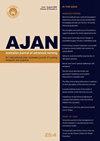Impact of non-invasive ventilation and non-medical caregiver presence on nursing workload – an observational study
IF 1.3
4区 医学
Q3 NURSING
引用次数: 0
Abstract
Objective: To find out if non-invasive ventilation (NIV) as a ventilation modality increases the burden on nursing personnel and give suggestions how the presence of non-medical caregivers in an ICU with an extreme staff shortage can reduce nursing workload during mechanical ventilation. Background: Although the European Union offers good quality healthcare, there are middle-income countries in the alliance that suffer from nursing staff shortage. For example, Bulgaria needs two times more nurses than it has now to meet the needs of its healthcare system. This calls for strategies that reduce nursing workload as much as possible. There is a common perception that NIV is more time-consuming for nurses compared to invasive mechanical ventilation (IMV) but only a few studies discuss the matter and none of them are settled in the unique environment where medical and non-medical caregivers provide direct patient care as a team. study design and methods: This is an observational study conducted in a specialised respiratory ICU with trained nurses, physiotherapists, and non-medical caregivers in a university hospital in Bulgaria. Ninety adult patients (43 on NIV and 47 on IMV) with acute respiratory failure that were on mechanical ventilation for at least five days were included. Nursing workload was measured via the Nursing Activities Score (NAS). Average and daily NAS were compared between groups. Then individual components of the score were analysed to determine which activities have the greatest impact on nursing workload. results: Average (39.72 ± 6.35 vs 46.08 ± 5,66, p< 0.001) and daily NAS for the first five days of mechanical ventilation and was significantly higher in the IMV group. There was a substantial drop of nurse workload with time in both groups, more significant for the patients who ventilated invasively. It occurred on the second day in both groups (NIV: p=0.005, 95%CI: 0.88-4.无创通气和非医疗护理人员在场对护理工作量的影响——一项观察性研究
目的:了解无创通气(NIV)作为一种通气方式是否增加了护理人员的负担,并就人员极度短缺的ICU中非医疗护理人员的存在如何减轻机械通气期间的护理工作量提出建议。背景:尽管欧盟提供高质量的医疗保健,但联盟中有一些中等收入国家面临护理人员短缺的问题。例如,保加利亚需要比现在多两倍的护士来满足其医疗保健系统的需求。这就要求采取尽可能减少护理工作量的策略。人们普遍认为,与有创机械通气(IMV)相比,NIV对护士来说更耗时,但只有少数研究讨论了这个问题,而且没有一项研究是在医疗和非医疗护理人员作为一个团队直接为患者提供护理的独特环境中解决的。研究设计和方法:这是一项观察性研究,在保加利亚一所大学医院由训练有素的护士、物理治疗师和非医疗护理人员组成的专门呼吸ICU进行。90例急性呼吸衰竭的成人患者(43例使用NIV, 47例使用IMV)使用机械通气至少5天。通过护理活动评分(NAS)测量护理工作量。比较两组间的平均NAS和每日NAS。然后分析得分的各个组成部分,以确定哪些活动对护理工作量的影响最大。结果:IMV组机械通气前5天的平均NAS(39.72±6.35 vs 46.08±5.66,p< 0.001)和每日NAS均显著高于IMV组。随着时间的推移,两组的护士工作量都有显著下降,有创通气患者的工作量更显著。两组患者均在第2天出现(NIV: p=0.005, 95%CI: 0.88-4)。
本文章由计算机程序翻译,如有差异,请以英文原文为准。
求助全文
约1分钟内获得全文
求助全文
来源期刊
CiteScore
2.30
自引率
7.10%
发文量
27
审稿时长
>12 weeks
期刊介绍:
The Australian Journal of Advanced Nursing publishes a wide variety of original research, review articles, practice guidelines, and commentary relevant to nursing and midwifery practice, health- maternity- and aged- care delivery, public health, healthcare policy and funding, nursing and midwifery education, regulation, management, economics, ethics, and research methodology. Further, the journal publishes personal narratives that convey the art and spirit of nursing and midwifery.
As the official peer-reviewed journal of the ANMF, AJAN is dedicated to publishing and showcasing scholarly material of principal relevance to national nursing and midwifery professional, clinical, research, education, management, and policy audiences. Beyond AJAN’s primarily national focus, manuscripts with regional and international scope are also welcome where their contribution to knowledge and debate on key issues for nursing, midwifery, and healthcare more broadly are significant.

 求助内容:
求助内容: 应助结果提醒方式:
应助结果提醒方式:


